Photography back to basics: life through the pinhole
- Published
- comments
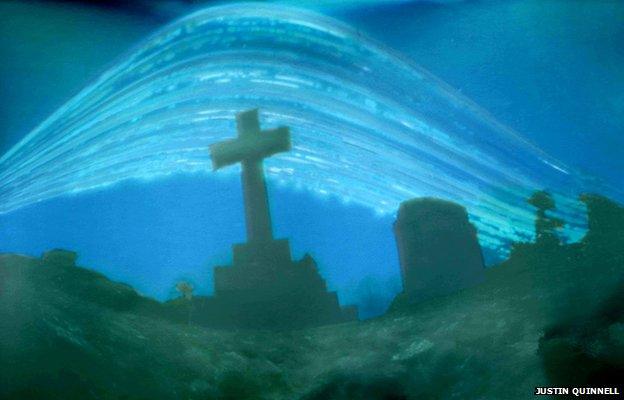
World Pinhole Day is an annual event on the last Sunday in April, and last year around 4,000 people from 74 countries celebrated the joy of making photographs through a small hole, then uploading their favourite image of the day on to the Pinhole Day gallery. Photographer and pinhole specialist Justin Quinnell explains the beauty of getting back to basics.
Pinhole photography forms an image through a small pin-sized hole rather than a lens and its origins can be traced back 2,500 years to when Mo Ti in China observed that light travels in a straight line through a small hole like an arrow.
It is a radical alternative to conventional photography, exploring a world beyond the limitations of the human eye and human wallet. In an age of instant automated screen-based predictability it rediscovers accident, wonder and delight through experimentation - qualities increasingly absent from contemporary photographic practice.
I have been making and using pinhole cameras for more than 20 years and they have ranged in size from being small enough to fit in my mouth to using wheelie bins, which aren't, and up to room-sized camera obscuras.
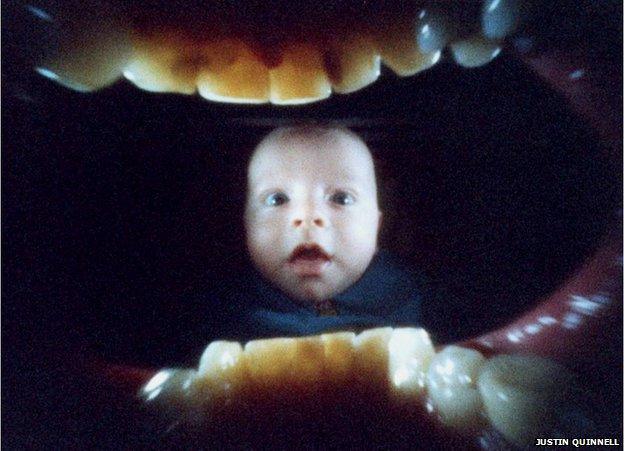
Quinnell's mouth-based pinhole camera in action
I've used a wide variety of materials, from fruit to wellington boots, toilet rolls, traffic cones and Pringles tubes, and taken portraits through the holes in a cream cracker: say "cheese".
I have fired them on rockets, thrown them off buildings and bridges, used them as shuttlecocks, held them underwater, taped them on to trains, car windscreen wipers, giant tortoises, forks and snooker cues.
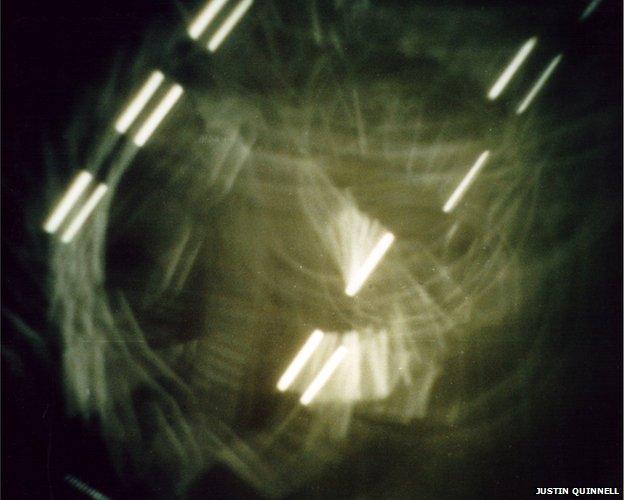
Shuttlecock camera
Some exposures have been for so long that the emulsion has been eaten by airborne mould.
Others have photographed camels through the eye of a needle, or have used holes in the Berlin Wall, eggshells, bullet holes and so on. These are visual adventures limited solely by people's imagination.
Some experiments could be viewed as unequivocal failures and many "lost" cameras are still exposing to this very day - but all encourage the unpredictability and experimentation rarely found in the commercially driven, automated conventions of modern photography.
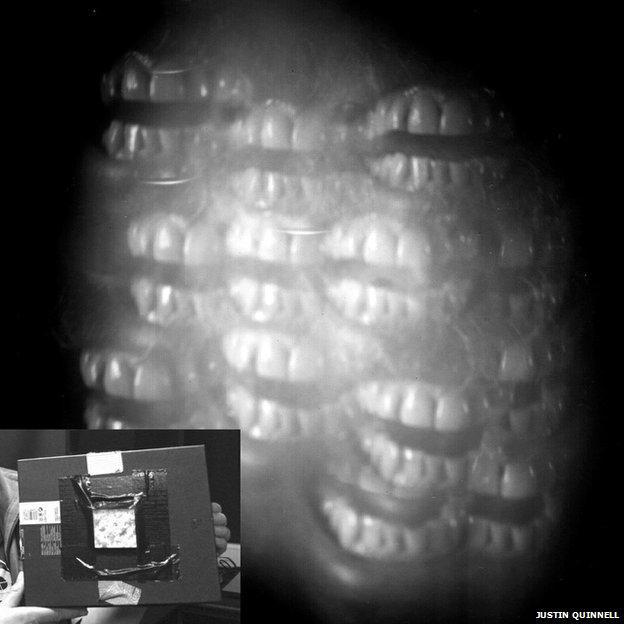
Cracker cam: The photograph was made using a cracker as a camera, the light filtering through it. Inset, the camera itself.
The simplest approach could be replacing the lens on your DSLR, external (digital single lens reflex camera) with a pinhole made in a piece of aluminium from a drink can. More progressive approaches could require emptying a few beer cans and making cameras from these. (You can even use the can to develop the picture in.) Instructions for these cameras and more can be found on the Pinhole Day website, external, as well as my own.
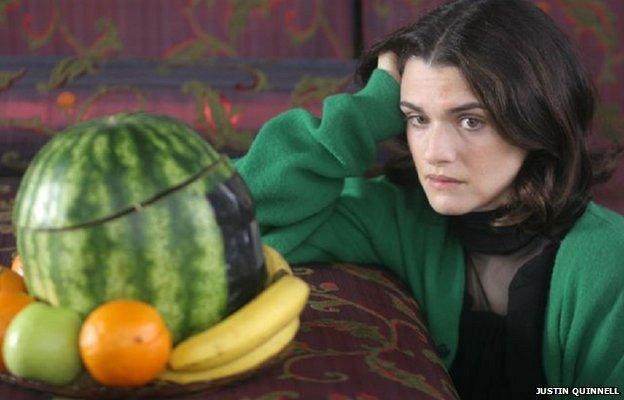
Experimentation is essential. Here actress Rachel Weisz poses for a picture with a water melon camera.
Pinhole images have qualities that aren't encountered using even the most expensive camera. These include:
Unlimited depth of field: Everything is in focus - from objects next to the pinhole to distant mountains enabling a "bug's-eye view" of the world.
Capturing time beyond vision: Exposure times can range from fractions of a second to the six months that a solargraph camera exposes for when capturing the movement of the sun.
Construction, indestructibility and cheapness: Cameras can be homemade. The combination of the camera's relative indestructibility with its low cost allows experimentation where digital cameras fear to tread.
Multiple exposures: You can take two or more images on top of each other, often accidentally.
The joyous lack of a viewfinder: The wonder of the unknown replaces the instantaneous fix of a digital viewfinder (and a children's "let me see it" demands are replaced by a wait-and-see approach).

Quinnell with his wheelie-bin camera
In our age of instant photographic feedback, it is amazing how a bit of time and thought can change your images from previsualised experiments to what could be the greatest photographs ever taken, something to ponder while you wait for them to be processed.
How to take part
There are several public workshops already organised and many local camera clubs will be participating. You can also build or adapt a camera beforehand using the instructions on the site.
Pinhole Day is there for everyone. It does not require being part of the consumerist mega-pixelled massive, but encourages experimentation and wonder. It is an opportunity for everyone to explore the visual world around us, using homemade cameras costing £4,000 less than the latest DSLR camera.
.jpg)
Taken using a beer can pinhole camera

Bathtime in the jaws of the beholder